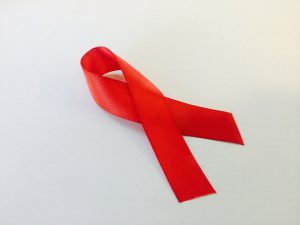
Sexually Transmitted Infections or Diseases(STIs/STDs)
Sexually transmitted infections or sexually transmitted diseases are caused by thirty different bacteria, viruses, and parasitic infections. These commonly spread from person to person via semen, vaginal fluids, the blood of infected person during unprotected vaginal /anal intercourse, oral sex or close skin to skin contact.
STIs can also be transmitted by breastfeeding; blood transfusion with infected blood products and from infected mother to baby before birth or during labor (vertical transmission).
The STIs may not have any early symptoms, hence getting screened for STIs is important following potential exposure.
Book your Kit Now: STD panel test

Scope of the problem:
- According to WHO, more than 1 million people are infected with sexually transmitted diseases every day worldwide.
- An estimated 376 million new infections with 1 of 4 STIs: chlamydia, gonorrhea, syphilis, and trichomoniasis.
- 988 000 pregnant women were infected with syphilis in 2016, resulting in over 350 000 adverse birth outcomes including 200 000 stillbirths and newborn deaths. STIs can have serious reproductive health consequences beyond the immediate impact of the infection itself (e.g., infertility or mother-to-child transmission).
Individuals infected with STIs may remain asymptomatic for a long duration, and pass on the infection to their partners if undetected and untreated.
1 HIV: Human immunodeficiency virus infection reduces the immunity to fight against viruses, bacteria, and fungi that cause illness. If left untreated, it leads to a chronic, life-threatening disease called AIDS.
HIV infection in the initials stage does not produce symptoms. Flu-like illness may be seen in some after 2-6 weeks of being infected, high infectivity is seen during this stage.

Early HIV signs and symptoms may include:
- Fever
- Headache
- Sore throat
- Swollen lymph glands
- Rash
- Fatigue
Severe symptoms of HIV infection may take 5 to 10 years to appear after the initial infection. If HIV is left untreated, it continues to multiply and causes severe chronic infections and cancers.
Signs and symptoms
- Swollen lymph nodes
- Persistent diarrhea
- Weight loss
- Fever for a long duration
- Persistent cough
Late-stage HIV infection / AIDS
Signs and symptoms include:
- Unexplained & persistent fatigue
- High-grade fever with chills
- Night sweats
- Swelling of lymph nodes for more than a month
- Chronic diarrhea
- Persistent headaches
- Unusual, opportunistic infections.
It is caused by herpes simplex virus (HSV), the virus enters the body through small breaks in your skin or mucous membranes. The early signs and symptoms are so mild they go unnoticed.
Signs and symptoms in male:
- Pain and itching on the genitals and surrounding area during the initial phase and a few weeks after exposure.
- Small Blisters (vesicles) or red bumps or open sores (ulcers) on the genital, anal and nearby areas.
- Sores on the penis, scrotum, buttocks, anus or thighs or inside the urethra.
- Pain or itching around the genital area, buttocks and inner thighs.
Signs and symptoms in females:
- Pain and tenderness in the genital area.
- Sores can erupt in the vaginal area, external genitals, buttocks, anus or cervix.
- Ulcers can make urination painful.
- Swollen lymph nodes in groin, fever, headache, muscle aches.
3 Human papillomavirus (HPV) infection:
Is the most common STI. It is a potential threat to cervical cancer in women. The most common symptom is genital warts in all genders.
Signs and symptoms in males:
- Flesh or gray colored small swellings in the genital area.
- Itching or discomfort in your genital area.
- Genital warts on the tip or shaft of the penis, on scrotum, or anus.
- Multiple warts close to gether that take cauliflower shape.
- Bleeding during intercourse.
Signs and symptoms in females:
Genital warts may occur on the vulva, the area between the external genitals and the anus, and the cervix.
- Genital warts can also develop in the mouth or throat of a person who has had oral sex with an infected person.
4 Hepatitis infections:
Hepatitis A, hepatitis B, and hepatitis C are viral infections that affect the liver causing inflammation of the liver. Hepatitis B and C are the most serious of the three.
Signs and symptoms may occur weeks after exposures are
- Fever
- Nausea and vomiting
- Fatigue
- Loss of appetite
- Abdominal pain or discomfort,
- Dark urine
- Muscle or joint pain
- Itching
- Yellowish discoloration of the skin
5 Syphilis:
Is a bacterial infection affecting genitals, skin and mucous membranes, and other parts of the
body, including the brain and heart.
The signs and symptoms may occur in four stages — primary, secondary, latent and tertiary.
Primary syphilis:
- The appearance of a typical single or multiple small painless sores (chancre) on the genitals, rectum, tongue or lip can be seen from the 10th day of exposure to 3 months.
- The Chancre usually heals without any treatment, but the disease remains dormant and reappears in the secondary and tertiary stages.
Secondary syphilis:
May begin between three to six weeks after the chancre appears.
The signs and symptoms may include:
- Fever along with enlarging lymph nodes.
- Soreness and aching
- Fatigue and discomfort
- Reddish-brown penny-sized sores over any part of the body including palms and soles. These may disappear without treatment or repeatedly come and go for as long as a year.
Tertiary syphilis:
Syphilis bacteria may spread, to internal organs if not treated, which may result in serious
damage to internal organs leading to death years after the original infection.
The signs and symptoms of tertiary syphilis include:
- Lack of coordination
- Numbness
- Paralysis
- Blindness
- Dementia
Neurosyphilis:
The nervous system can be affected at any stage by the syphilis bacteria, leading to
Neurosyphilis.
The signs and symptoms may include:
- Headache
- Behavior changes
- Movement problems
Congenital syphilis:
It is the condition that occurs when a pregnant woman with syphilis passes the disease to the
unborn infant. It may be disabling and even life-threatening, so it’s important for a pregnant
woman with syphilis to be treated.
It is a bacterial infection, often remains asymptomatic in the early stage. The symptoms appear
after 1-2 weeks of exposure, which will be mild and can be overlooked easily.
Signs and symptoms in males:
- Painful urination
- Lower abdominal pain
- Testicular pain
- Discharge from the penis
Signs and symptoms in females:
- Vaginal discharge
- Pain during sexual intercourse
- Bleeding between periods
- Painful urination
- Lower abdominal pain.
7 Gonorrhea:
Gonorrhea is a bacterial infection. The symptoms generally appear after one week of exposure or may remain asymptomatic for months after infection.
Gonorrhea signs and symptoms in males:
- Pain and burning sensation during urinating.
- Testicular pain and swelling.
- Bloody or Cloudy (thick) discharge from the penis.
- Anal Itching
Gonorrhea signs and symptoms in females:
- Pain and burning sensation during urinating.
- Bloody or Cloudy (thick) discharge from the vagina
- Heavy or prolonged bleeding during menstruation
- Painful intercourse
- Anal Itching
8 Trichomoniasis:
Is caused by parasite Trichomonas vaginalis.It trichomoniasis produces symptoms with 1-4
weeks of exposure; range from mild irritation to severe inflammation.
Signs and symptoms in males:
- Painful urination
- Foul-smelling discharge from the penis
- Itching or irritation inside the penis
Signs and symptoms in females:
- Clear, white, greenish or yellowish vaginal discharge
- Strong vaginal odor
- Vaginal itching or irritation
- Pain during sexual intercourse
- Painful urination
1 How to prevent STDs/STIs?
Awareness about STDs/STIs.
Protect yourself and your sexual partners by
- Abstinence: Is the most reliable way to avoid infection is to not have sex (i.e., anal, vaginal or oral).
- Vaccination: Vaccines are safe, effective, and recommended ways to prevent hepatitis B and HPV
- Be faithful to your partner: be sexually active with only one person, who has agreed to be sexually active only with you
- Avoid multiple sex partners: Be loyal to your partner, avoid multiple sexual partners to decrease the chances of getting infected.
- Both the partners should get tested for STD/STI’s and share your test results with each other.
- Use Condoms: Condom is highly effective in reducing STD transmission. Use a condom every time you have anal, vaginal, or oral sex.
- Get tested regularly: If you are sexually active with multiple partners, get tested regularly. Most of the STIs are easy to cure/ treat if detected early.
1 Which STIs should I get tested for?
CDC has recommended the following tests
- All adults and adolescents from ages 13 to 64 should be tested at least once for HIV.
- All sexually active women younger than 25 years should be tested for gonorrhea and chlamydia every year.
- All pregnant women should be tested for syphilis, HIV, and hepatitis B starting early in pregnancy. At-risk pregnant women should also be tested for chlamydia and gonorrhea starting early in pregnancy. Testing should be repeated as needed to protect the health of mothers and their infants.
- All sexually active gay and bisexual men should be tested at least once a year for syphilis, chlamydia, and gonorrhea. Those who have multiple or anonymous partners should be tested more frequently for STDs (i.e., at 3- to 6-month intervals).
- Sexually active gay and bisexual men may benefit from more frequent HIV testing (e.g., every 3 to 6 months).
- Anyone who has unsafe sex or shares injection drug equipment should get tested for HIV at least once a year.
Book your Test Now: HIV STD panel test

Q. What tests should I do to rule out STIs?
- Blood investigation for STD/STI’s
- Urine test for Gonorrhea and Chlamydia.
- The cervical smear of HPV.
Q. Are STIs curable?.
Most of the STIs are easy to cure or manage, provided these are detected early. Nowadays, with treatment, even people with HIV live full and normal lives.
